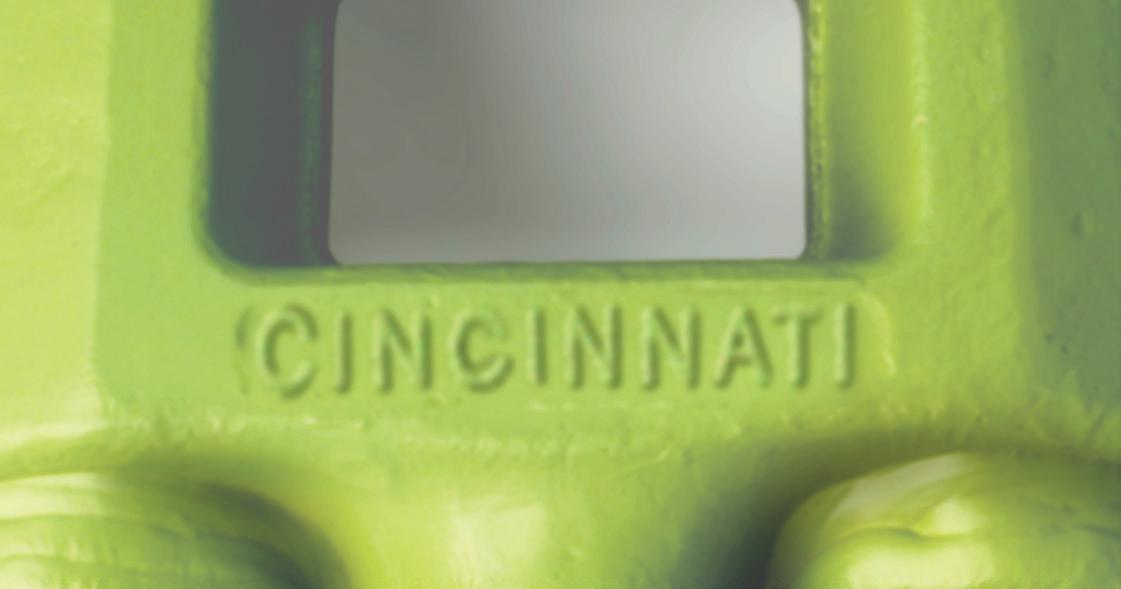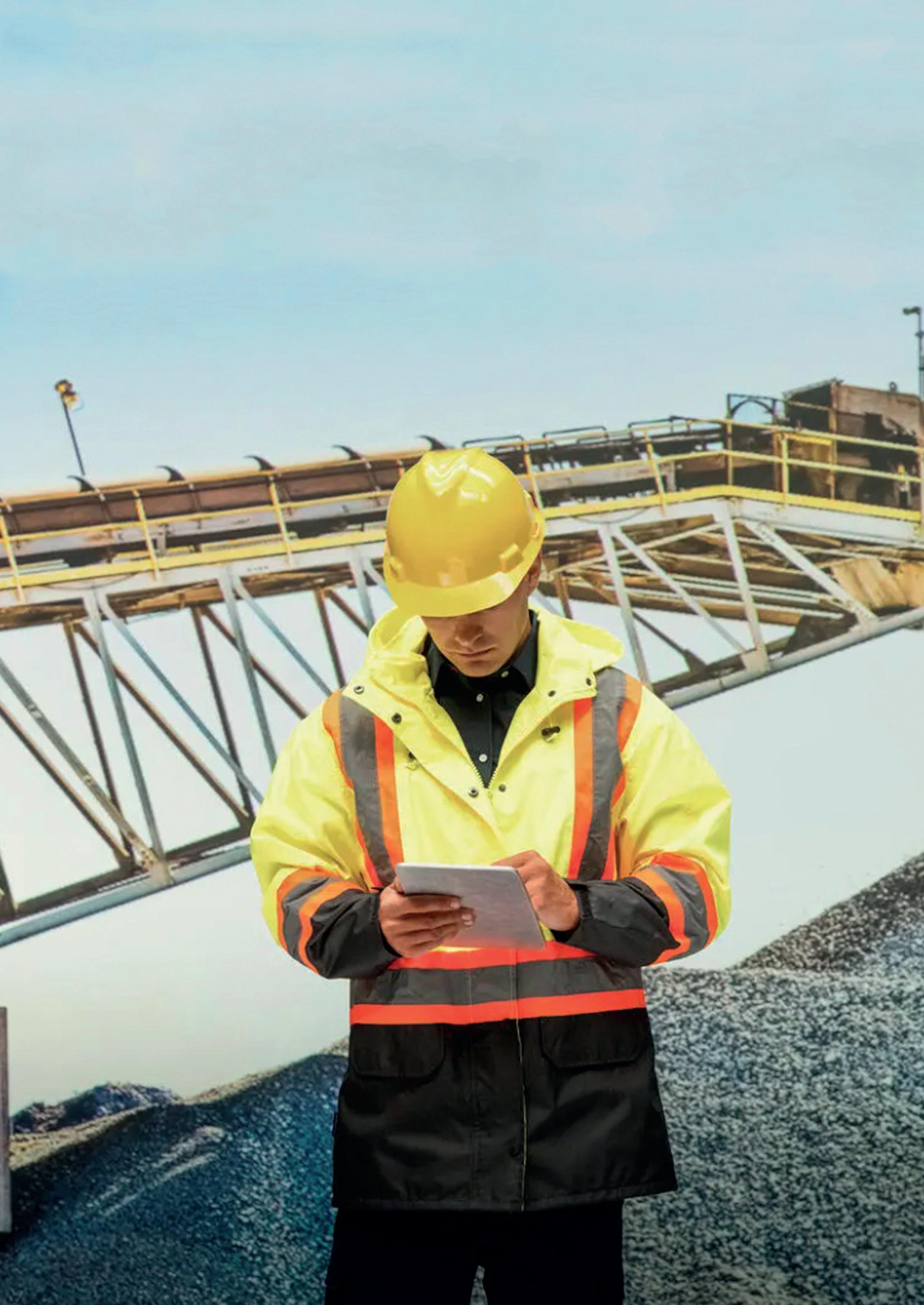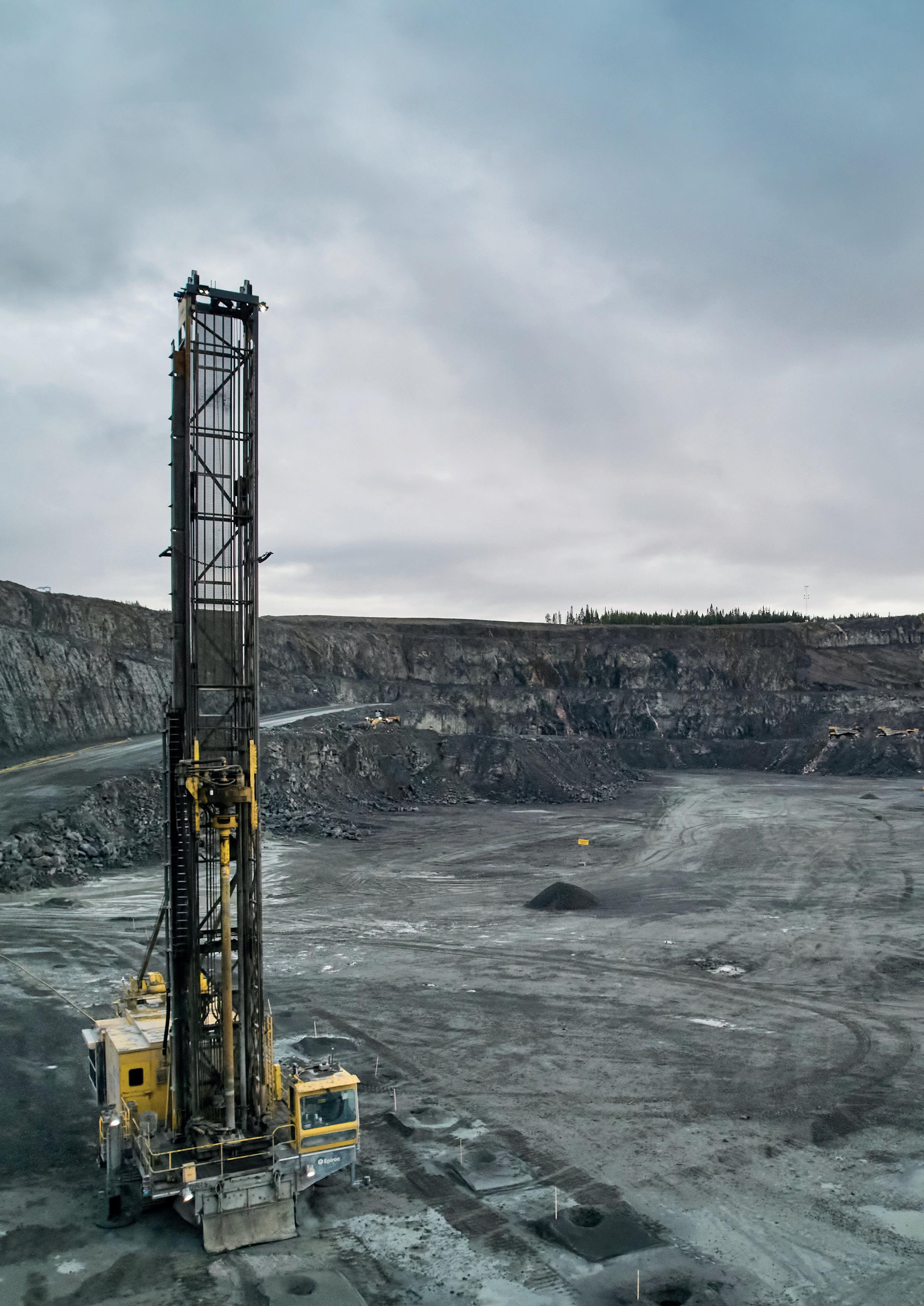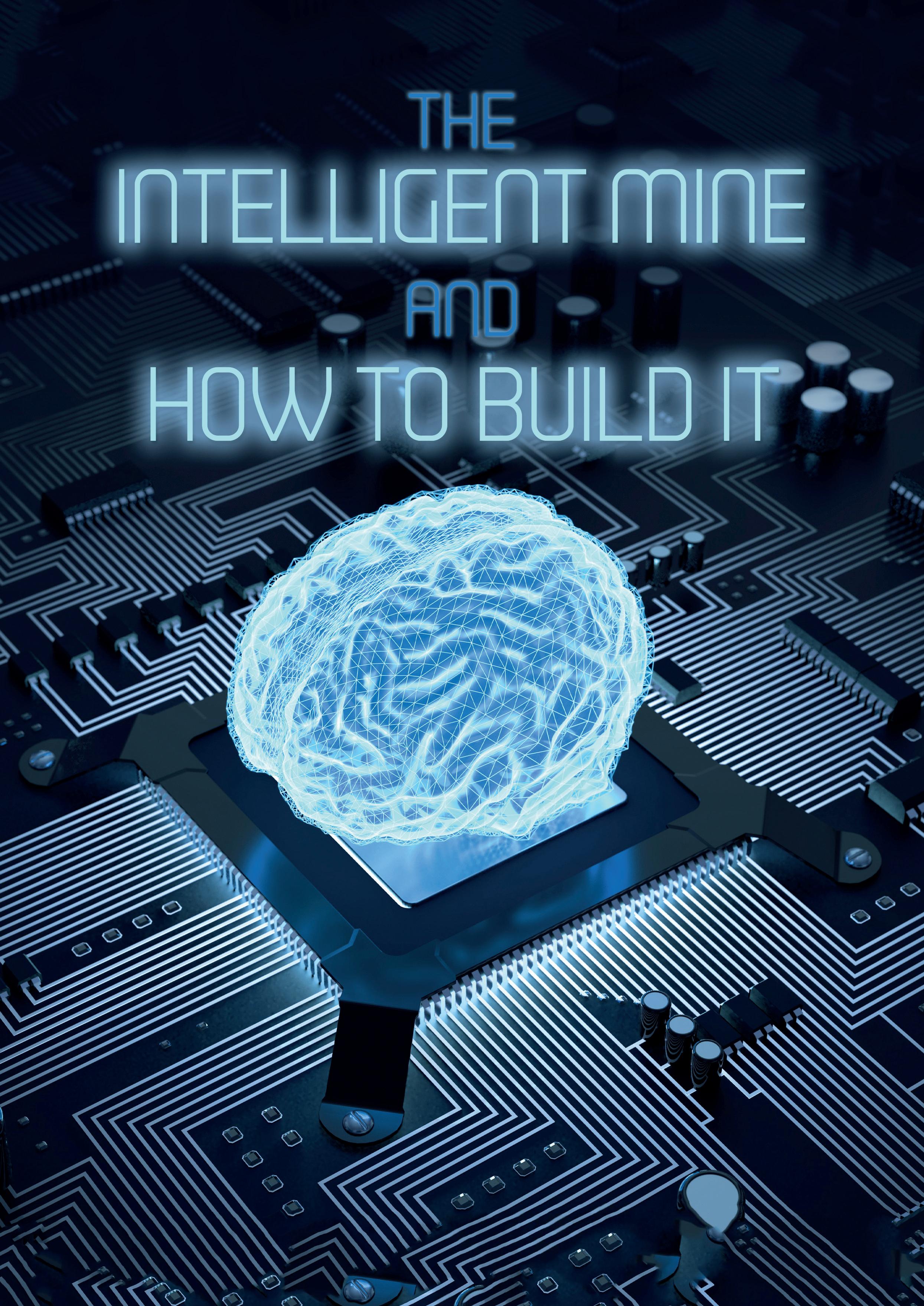
8 minute read
The Intelligent Mine And How To Build It
Mike Brooks, AspenTech, USA, reviews the benefits of embracing digital optimisation and predictive/prescriptive maintenance in the context of improving mining operations.
The economic slowdown, resulting from the global crisis of the last two years, has driven many companies across the metals and mining industries to review operational efficiency, asset reliability, and workplace safety from a new and different perspective. That refreshed workplace outlook considers the need to accelerate adoption of automation and modern digital technologies as the critical influence for improving mine operations.
In the past, the mining industry has been slow, if not reluctant, to fully embrace digital transformation. According to BCG’s Digital Acceleration Index (DAI), metals and mining is approximately 30 – 40% less digitally mature than comparable industries.1 Areas such as petrochemical and electric power are similar in their need for extensive capital investment in equipment and resources, but have been more confident in accepting change.
To remain agile, competitive and profitable over the long term, leaders in the mining industry are now adopting digital capabilities into their operations and embracing immediate and measurable benefits. They understand this is especially important, given that they are operating in an environment currently affected by volatility, uncertainty, complexity,
and ambiguity (VUCA) concerns. The ability for quick wins through digital technology demonstrates the inherent capability and value creation while building momentum for future technological projects. Operators understand that digital technologies must be agile, flexible, and be effective across the range of equipment in their asset-intensive industry, covering everything from mobile vehicles to fixed plant machines. There is a need to deliver accelerated time-to-value in an industry with tight operational constraints and short deadlines. A push for a better and more efficient way of managing data is critical to digitalisation and stimulates a new methodology focused on data-driven planning, control, and decision-making that will drive the emergence of the intelligent mine.
Building the intelligent mine
Mine leaders make tough decisions every day. Frequently they scramble around isolated pockets of data to assimilate the relevant information to develop the correct insights to make good decisions. Clearly, it is not enough for data to be available, instead appropriately sorting lots of diverse data in lots of places to enable decision-making is a top priority.
The keys are to integrate data and exercise high-level analysis with an understanding of the domain work requirements. Consequently, the intelligent mine brings all that data together with inherent capability to sort and analyse them, developing and presenting information and insight in the proper context to support key decision-makers at any location where they may be working. Only relevant and complete information at their fingertips enables decisions that deliver tangible business benefits. Data stored in 50 different standalone systems will not help to drive efficiencies. So, addressing several issues will facilitate success in a move towards the intelligent mine. First, implement automated data gathering systems to capture relevant data from various parts of the mining process and facilities. Second, only good data enables good decisions, so assure the tools deployed can detect the bad data and deploy management of change to monitor and assure all changes are consistent, correct, and improve data processing. Third, assist the mine personnel by providing capabilities to integrate data with built-in relevant analytics to process data in the correct context for a given purpose. Such analytics do the heavy-lifting, plus rote and tedious work with intense analytics on behalf of the personnel, thus lifting their tasks to higher level judgement and decision tasks – let the computers do what they do best and allow humans do what they do best.
The predictive dimension
In the context of the Intelligent Mine, having access to good data is important, though it represents just one part of the equation. Organisations also need to be able to analyse the data in different ways within a context of the problem to be solved with appropriate predictive outcomes. One critical way for mining concerns predicting the degradation of equipment that, if unattended, will lead to equipment breakdowns and unplanned maintenance. Mining is equipment and infrastructure-intensive with expensive machinery. Moreover, the business suffers if machinery is not maintained and kept reliable. The biggest profitability challenges that any mining operator faces are in equipment breakdowns, the repairs, and consequent production shortfalls. In the past, such asset failures were largely taken for granted and accepted as part of the mining business. However, today the drive for better operational efficiency focuses attention of preventing such breakdowns, or at least knowing about them early enough to plan safe and efficient repairs, in order to minimise the unplanned downtime and lost production.
Bringing in predictive maintenance
While chasing the business goal of reliable equipment is vital in the mining value chain, sometimes the ore processing has a high impact. High recoveries are often only possible when the ore process runs in an optimal, stable way. Whenever equipment breaks down, losses can occur during the stop and restart until the process is stabilised once more. Reliability is key to preventing, or at least minimising, such adverse effects. Traditional preventative maintenance methods generally cannot deliver the benchmark equipment availability and performance required in today’s tough economic climate. Despite best efforts, earlier preventive maintenance efforts cannot deliver sufficient time-to-failure warnings to deliver a significant impact on profitability. That is where modern predictive maintenance plays a vital role. The technology monitors data from sensors on and around the machine to develop intense multi-dimensional and temporal patterns of normal operation, abnormal operation, and explicit degradation patterns that precede breakdown. Not only providing extreme early warnings – where time is money – the patterns that the artificial intelligence (AI)/ machine learning digital technology detects are patterns that limited human dimensionality cannot perceive. Also surpassing human capability, the technology can assess the health of numerous machines every few minutes. It also delivers early warnings to maintenance teams, often with prescriptive advice that enables a focus on the bad actors and known issues. Predictive maintenance enables maintenance and reliability workers. With tough challenges, spread thin over large sites, workers get pre-warnings, and much of the intense repetitive analytics and engineering are executed to help them with the resulting information delivery, so they know when and what to prioritise. Maintenance teams with predictive maintenance tools assure the intelligent mines can make great progress in eliminating unplanned breakdowns.
Finding a solution
An asset performance management (APM) approach – with integrated predictive maintenance capability – assures mines improve reliability, availability and uptime, while reducing the requirement and great expense of redundant equipment. Operations teams have often planned for lower availability; installing three machines when they only need two, or buying 10 haulage trucks to ensure they always have eight up and running. With the right technology, mines can achieve benchmark reliability without the need for more people, equipment, or spend. Companies can work at the
required production levels and either park up or switch off redundant equipment. This makes a significant contribution to the bottom line. To develop an efficient APM programme, certain components must be in place. All too often, mines try to get away with just investing partially in digital solutions to save money by gathering data in one place. Without domain-centric AI/machine learning analytics, this limits the reach and value technology can deliver. Successful APM programmes draw on data from sensors and other sources, for example: enterprise resource planning (ERP) systems, manufacturing execution systems (MES), laboratory management information systems, and advanced process control (APC) systems. Machine learning and other data science techniques require delivery of available data, so plant historians can play an important data delivery role.
Getting processes right References
1. GANERIWALLA, A., HARNATHKA, S., and VOIGT, N., ‘Racing Toward a Digital Future in Metals and Mining’, BCG, (4 February 2021), www.bcg.com/publications/2021/adopting-a-digital-strategy-in-themetals-and-mining-industry
Digitalisation and APM technologies play a key role in ensuring success. Integration and inter-operation between the foundational technologies are a part of the journey. For example, the predictive maintenance system must be fully capable of incorporating data from the asset management system to properly predict explicit failures, as well as data from the plant historian to be able to understand operational activities. So, to achieve their core goals mining companies must implement the technologies in the right way with the right change management processes around them to deliver on the promise of the intelligent mine. Yet, the right approach becomes a game-changer, giving mines extreme early warnings of degradation that can lead to failures, enabling action to avoid weeks of downtime and tonnage losses. Many mines have felt that pain before and now seek the ability to proactively prevent breakdowns and deliver immediate returns.
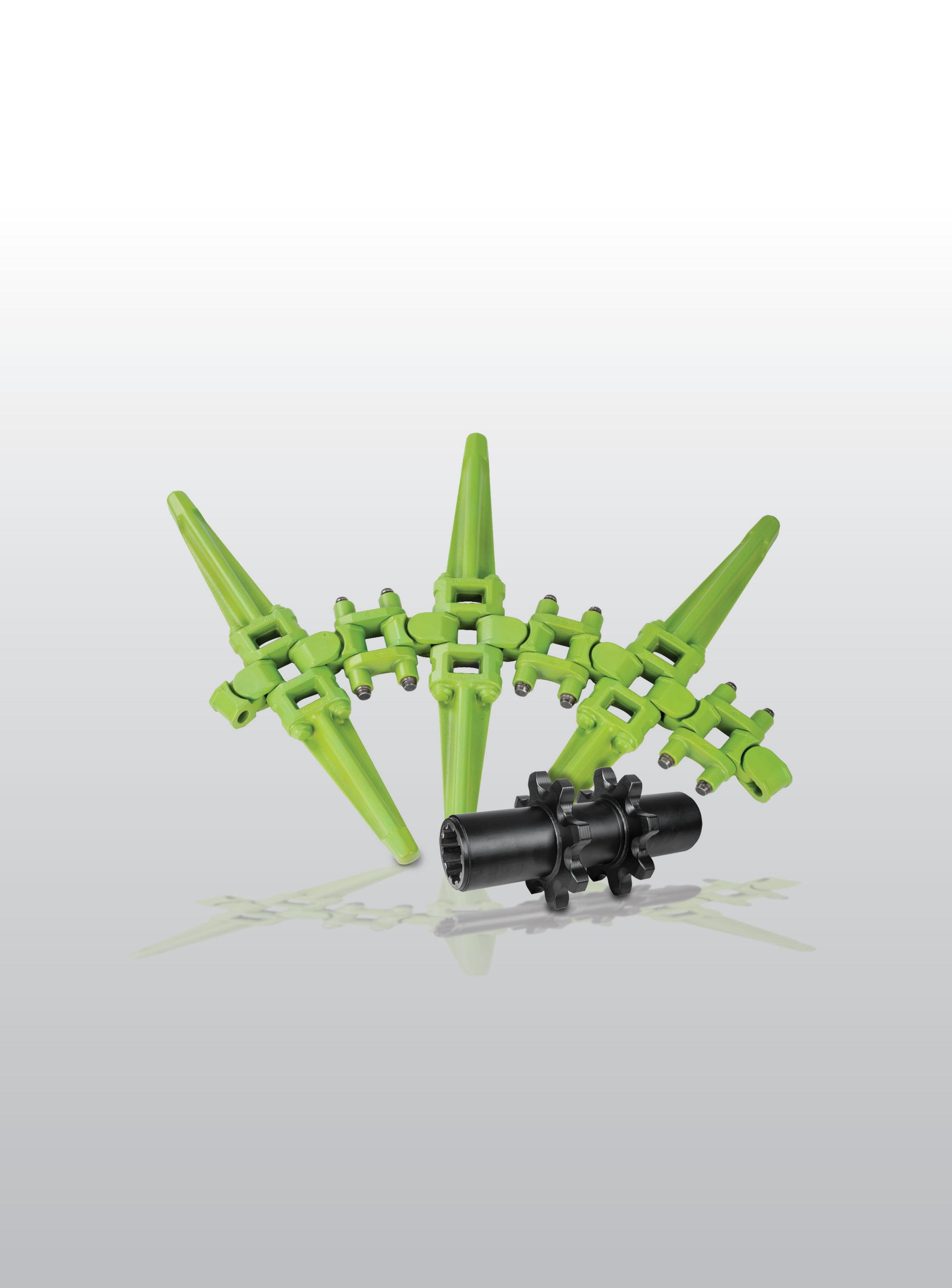
YOUR MINING MACHINE DESERVES THE BEST CHAINS
Cincinnati Mine Machinery Company designed and installed the first Dual Sprocket Conveyor Chain. Our unique design utilizes superior metals and a proprietary heat treatment process for unparalleled strength. Our Dual Sprocket Conveyor Chain runs longer and stronger which means less downtime and lower cost per ton. So when it's time to choose, choose the strongest chain under the earth. For over 90 years, Cincinnati Mine Machinery continues to be THE STRONGEST L INK .
Looking to the future

Today, the mining industry is at the level of maturity to fully embrace and utilise the digital optimisation technologies. Those operators who do not adapt and build a strategy to utilise such technology will struggle to compete against those who do. Prescriptive maintenance can quickly bring results to a mining company by improving the use of existing capital assets and eliminating the surprise of unplanned downtime, which has a direct impact on productivity and safety. Scalable prescriptive maintenance solutions add value to assets; from a single asset, conveyer system, a full processing unit, a large mill, and all the way to equipment across an entire global enterprise. The truly intelligent mine supports mining companies in reducing unplanned downtime and decreasing safety risks, while running more efficiently and increasing profitability.
